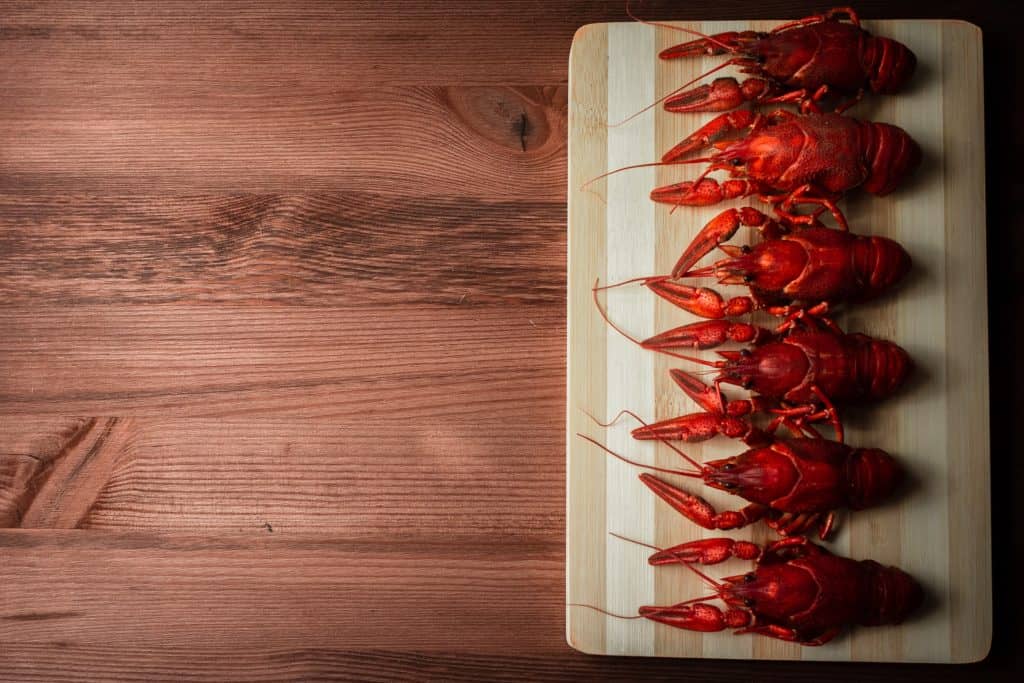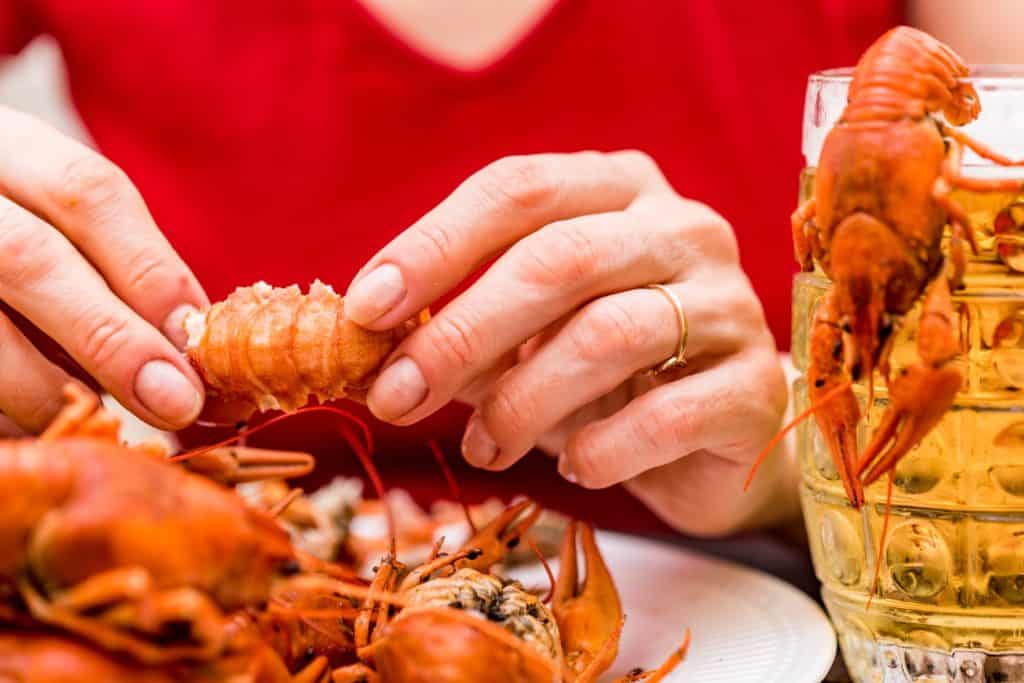A lot of seafood contains traces of Mercury, a chemical that has been linked to birth defects, seizures, and blindness in infants. This is a more noteworthy concern for larger specimens, as there’s more space for the compound to accumulate in their bodies.
Crawfish shouldn’t have that issue – in fact, they’re even known to have low Mercury levels relative to other seafood. They’re also a lean protein filled with crucial vitamins and minerals.
They’re also rather delicious to boot – but can pregnant women eat crawfish safely?
Crawfish are safer for pregnant women to eat than other seafood, but that hinges on how well they were prepared and cooked. While freezing crawfish will reduce bacteria growth, it won’t kill it altogether – cook it to a high internal temperature of 145°F (63°C) to be sure.
The finished product should have meat that’s firm to the touch and a little briny. It shouldn’t ever smell pungent or unpleasant, so discard it ASAP if that’s the case.
Pregnant women can eat crawfish safely – in fact, crawfish would be great for them thanks to all the protein and nutrition it offers! Just be mindful during your cooking preparations, and remember that it’s always better to play it safe than sorry when it comes to handling seafood.
Are Crawfish Safe for Pregnant Women? Things to Consider
Crawfish Prep and Cooking
It’s perfectly fine for pregnant women to eat crawfish in moderation. Just make sure to cook everything thoroughly, as underdone crawfish can contain not only harmful bacteria like Salmonella or E. coli but even awful parasites like lung flukes.
Lung flukes are transmitted by ingesting undercooked crawfish – with their larva migrating into the patient’s lungs after a few days’ time. Infected individuals experience fevers, chest pains, coughing fits (tinged with blood), and exhaustion.
These would be difficult to deal with in normal conditions, but pregnant women are at even greater risk given that their bodies are already being pushed to provide nutrition and oxygen for two.
Cooking it to the internal temperature of 145°F (63°C) destroys those contaminants, making it fit for consumption. This is important for seafood, as there are a lot fewer factors in your control here compared to produce like chicken or beef. Be sure to follow proper food safety guidelines here.
Cold Storage (Won’t Always Cut It)
Freezing crawfish in cold storage is strongly recommended, as doing so will seriously hamper the growth of bacteria. They can be stored for about five to six months this way, though we’d recommend that you don’t keep them for longer than three months to ensure optimal flavor.
During this time, bacteria and parasites in the crawfish will inactivate – but they won’t be killed. At least, they won’t be killed reliably. This is why reaching that internal temperature is crucial.
Think of it this way: freezing provides them with an inhospitable environment, but bacteria and parasites are tough enough to endure that for a time. Heat treatments denature the proteins in those contaminants, which specifically compromises their means to function.
Be sure to store your crawfish in thick freezer bags or airtight containers – that way, you can best mitigate the risk of cross-contamination.
As a small aside, remember that crawfish should never start leaking any sort of liquid. If this happens, immediately discard your batch – don’t bother cooking it to find out!
Checking the Product
Now that you’re done cooking, check your crawfish. You might have followed all the proper steps, but that won’t matter if you were handling a bad batch!
Cooked, unspoiled crawfish meat should be vibrant red or orange-red. While crawfish do come in an abundance of colors, the meat will almost always turn orange-red after cooking. Some recipes might leave you with blue crawfish meat, which will still be perfectly edible. Any other color of crawfish meat cropping up while you cook is a very bad sign.
Crawfish meat should also stay firm. If the meat is starting to look mushy – or worse, falling off the shell – it won’t be fit to eat anymore. There’s no salvaging spoiled crawfish, so toss it away.
Crawfish meat should also smell pleasant and mild, with their taste reflecting that. If it starts to smell awfully like bleach, your crawfish meat has probably been tainted by bacteria. Don’t bother with a taste test, as even brief exposure could leave you with a bad case of food poisoning!
Final Thoughts
Pregnant women can safely eat crawfish. Crawfish is one of the safer seafood for them to eat, but it’s still seafood – you need to be certain that it’s been properly stored, prepared, and cooked, as any contaminants that persist will undoubtedly harm your pregnancy.
The most crucial guideline to follow here is to always cook it to an internal temperature of 145°F (63°C). Anything less than that is unsafe, which is completely unacceptable for pregnant women.







